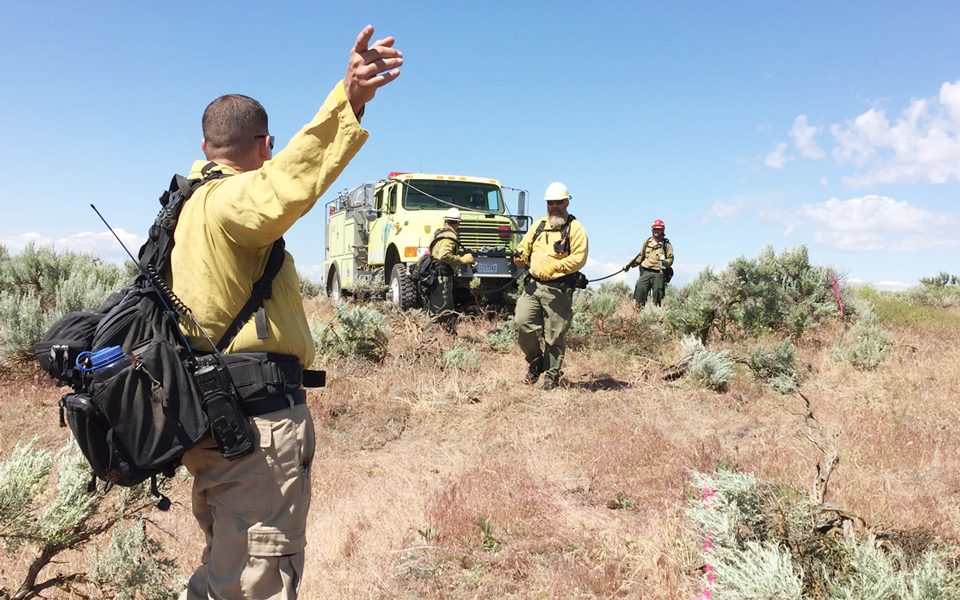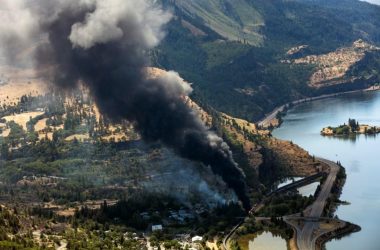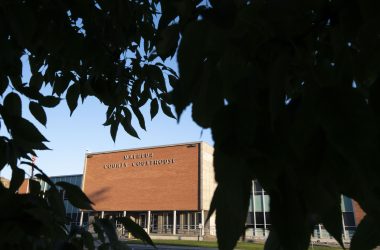
By Mitchell Willetts
The Enterprise
In the late morning hours, fire crews in boots and flame resistant gear march across the parched hills just outside of Vale.
They blend with the dying grass and fading brush, shouldering hoses tethered to U.S. Bureau of Land Management fire trucks.
The heavy-duty fire engines, capable of carrying 750 gallons of water, escort the crews spraying down imaginary flames as they go.
Firefighters stop or slow only rarely, huddling closer to their engines. They gesture and yell, planning their next move. Under the diesels’ hum, there’s radio chatter. The huddle loosens and the forward attack continues.
An observing fire evaluator approves of what he sees as the Vale crews demonstrate they are ready to face the approaching wildfire season.
“They’re better than just good,” said Brian Williams, a BLM reviewer, at last Friday’s exercise. “They’re excellent.”
The Vale-based crews have been readying for months to defend a million acres of Malheur County rangeland from the summer fires sure to come.
All equipment, from engines and hoses, down to radios and shovels, has to be in top condition. There can be no doubt that every tool can be relied upon when the time comes.
Still, in the field, a tool or two will fail. Trucks will break down. Water sources will give out. Firefighters train to overcome such obstacles, depending on each other more than their equipment.
They practice their strategic attacks to contain or stop a wildfire. Last week, the trucks and crews demonstrated a three-pronged approach to tighten around a fire and choke it out.
There isn’t a lot of room for error, said Mike Pagoaga, a BLM fire specialist.
“There’s definitely a lot of danger in this job, and that never goes away,” he said.
Safety has become an emphasis in the federal fire services after fire crews were killed battling blazes.
There were a small handful of problems during last week’s exercise. At times, engine crews couldn’t hear fire dispatchers over the roar of engines. One firefighter lost his radio, impairing his ability to communicate with his team.
Regardless of the problems, firefighters adapted and forward progress never ceased. The blaze was put out and no lives, real or simulated, were lost.
Immediately following the wildfire drill, the three crews parked their engines and gathered for an after-action report. Six members of a national BLM review team present for the drill said they were pleased with what they saw. They evaluated the engine crews.
“They’re very good — 100 percent ready to go and fight fires,” said Williams, the team leader.
Firefighting exercises, like that witnessed by the national review team, are conducted regularly to sharpen everyone for fire season.
“We spend probably three quarters of the year preparing for the other quarter,”
said Al Crouch, BLM fire mitigation and education specialist.
The three engine crews are just a small chunk of the BLM resources available to the Vale District office, protecting five million acres spread across four states. The district currently has 80 firefighters, an elite 20-person Hot Shot crew, and eight stand-by crews. They have access to 19 engines, one Bell 407 helicopter, and a tactical water tender that can carry 2,000 gallons of water.
All the machines and the crews are freshly inspected, ready to go, though they might be sitting on the bench longer than usual this season.
Bob Narus is the BLM’s fire management officer for the Vale District. He believes this year’s fire season may get off to a late start due to higher than usual moisture in range brush. BLM monitoring shows those moisture levels are 60 percent higher than they were a year ago.
“There is not a lot of potential for a serious fire right now,” Narus said. “I’m more comfortable this year than I have been in the last several years,” Narus said.
He knows the luck won’t hold.
“Every season we have a fire season. We will have fires,” he said.
Wildfires are just a matter of time in Malheur County, triggered by a spark from a tailpipe or a ricocheting round from a rancher’s rifle. More often, fires start with a bolt of lightning, according to Crouch.
There’s a lot of empty space in Malheur County and that creates a uniquely challenging environment to fight fire.
The BLM is generally the primary responder to range fires in the region, but fires often start far away from any Vale District stations. To the BLM, this means hauling necessary resources and manpower to a scene across miles and miles of rugged terrain, all while the fire keeps growing.
The agency also works closely with other firefighting agencies, like the rangeland fire protection associations that might be closer, whose crews can arrive earlier, get to work faster, suppressing the fire on their own or buying time for additional resources to arrive.
The Vale District overcomes the vastness of its territory by dispersing resources at guard stations throughout the region. Engines and crews are stationed at the guard stations throughout the fire season, ready to react to any fire that kicks up.
Other crews fight fire by phone and by computer, backing up the field crews with logistics, weather reports and more. Maybe less exciting than boots on the ground, but no less critical, Crouch said, neglecting such details can have consequences.
“Usually when we get our summer lightning storms, we’re not the only district getting hit. Usually Burns gets lightning about the same time we do, and Boise does,” Crouch said. “So what can be really challenging is we’re all fighting fire instantaneously.”
In such situations, there is no guarantee of help from neighboring organizations no matter how desperately needed.
“We’re not waiting for a fire to happen, and then try to get folks here. We try to get them here ahead of time,” Crouch said. “It takes a lot of coordination to make that happen, trying to place resources in the right location to anticipate where we’re going to get our fires.”
Crouch said that while increased staffing would make him feel more at ease, he has no doubt that Vale District firefighters are prepared for the coming months.
“Could we use a few more people? We’re always looking for additional staff, but we’re ready to go,” Crouch said. “We’ve got all the stuff we need and we’ve got the right staff and we’ll have them in the right places…and we’ll be good.”




